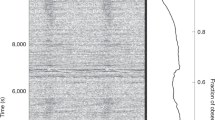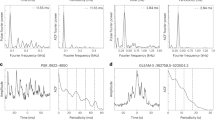Abstract
THE discovery of a pulsar near the Crab Nebula with an apparently increasing period of 0.03309 s (F. D. Drake at the fourth Texas symposium on relativistic astrophysics, 1968) and the earlier detection of another short period pulsar (PSR 0833–45) at the site of the supernova remnant Vela X (ref. 1) seem to support the idea that pulsars are associated with the end product of supernova explosions, presumably the neutron stars. The rate of pulsation is fastest when the star is young but gradually slows down to ∼ 1 s. To test further such a hypothesis, it will be interesting to look for more pulsars associated with supernovae of known age. No doubt radio astronomers have already started searching for fast pulsars at the sites of two other well known historical supernovae, Tycho and Kepler. Examination of ancient oriental records on suspected supernovae events, however, suggests some more promising candidates. They were at the explosion as bright as or brighter than the Crab supernova. Hence they could be close enough for pulsars associated with them to be within the detectable range.
This is a preview of subscription content, access via your institution
Access options
Subscribe to this journal
Receive 51 print issues and online access
$199.00 per year
only $3.90 per issue
Buy this article
- Purchase on Springer Link
- Instant access to full article PDF
Prices may be subject to local taxes which are calculated during checkout
Similar content being viewed by others
References
Large, M. I., Vaughan, A. E., and Mills, B. Y., Nature, 220, 340 (1968).
Schonfeld, E., Astron. Nachr., 127, 153 (1891).
Goldstein, B. R., Astron. J., 70, 105 (1965); Marsden, B. C., ibid., 70, 126 (1965); Goldstein, B. R., and Ho pen Yoke, ibid., 70, 738 (1965); Gardner, F. F., and Milne, D. K., ibid., 70, 754 (1965); Minkowski, R., ibid., 71, 371 (1966).
Duyvendak, J. J. L., Publ. Astron. Soc. Pacific, 54, 91 (1945).
Minkowski, R., Ann. Rev. Astron. Astrophys., 2, 247 (1964).
Mills, B. Y., Alec, O. B., and Hill, E. R., Austral. J. Phys., 13, 676 (1960).
Poveda, A., and Woltjer, L., Astron. J., 73, 65 (1968).
Ho pen Yoke, Vistas in Astronomy, 5, 127 (1962).
Hsi Tse-Tsung, Smithson. Contr. Astrophys., 2, 109 (1958).
Pskovskii, Y. P., Sov. Astron., 7, 501 (1964).
Needham, J., Science and Civilization in China, 3 (Cambridge Univ. Press, 1959).
Author information
Authors and Affiliations
Rights and permissions
About this article
Cite this article
SHEN, C. Pulsars and Ancient Chinese Records of Supernova Explosions. Nature 221, 1039–1040 (1969). https://doi.org/10.1038/2211039a0
Received:
Issue Date:
DOI: https://doi.org/10.1038/2211039a0
This article is cited by
-
The Alleged Supernova of 1006
Nature (1969)
Comments
By submitting a comment you agree to abide by our Terms and Community Guidelines. If you find something abusive or that does not comply with our terms or guidelines please flag it as inappropriate.



